A Dynasty of Rhythm: The Enduring Legacy of Bebo and Chucho Valdés (both born Oct. 9)

Search your favorite sheet music in the Sheet Music Catalog
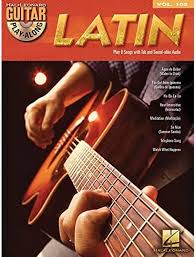
Please, subscribe to our Library.
If you are already a subscriber, please, check our NEW SCORES’ page every month for new sheet music. THANK YOU!
A Dynasty of Rhythm: The Enduring Legacy of Bebo and Chucho Valdés
In the annals of jazz and Latin music, few stories are as poignant, triumphant, and artistically rich as that of the Valdés family. In a remarkable twist of fate, both father and son—Bebo and Chucho Valdés—were born on the same calendar day, October 9, separated by 27 years. This shared birthday seems a cosmic affirmation of a shared destiny, a divine thread weaving through a tapestry of rhythm, harmony, and improvisation that would forever change the sound of Cuban music and its dialogue with the world. Bebo, the architect and pioneer, and Chucho, the virtuoso who built a cathedral upon that foundation, represent two halves of a musical century.
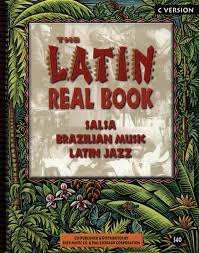
Browse in the Library:
Or browse in the categories menus & download the Library Catalog PDF:
Part I: The Architect – Bebo Valdés (1918-2013)
Biography
Dionisio Ramón Emilio Valdés Amaro, known to the world as Bebo, was born in Quivicán, Cuba, in 1918. His musical journey began classically, studying piano at the Conservatorio Municipal de Havana. However, the vibrant, syncopated sounds of son, danzón, and mambo that filled the Havana air proved an irresistible pull. By the 1940s, he was a formidable figure in the city’s nightlife, becoming the house pianist and arranger for the famed Tropicana Club in 1948.
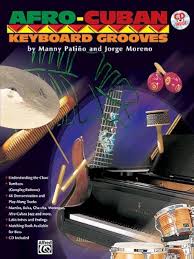
During his tenure at the Tropicana, Bebo was at the epicenter of Cuban musical innovation. He arranged for stars like Benny Moré and was a key player in the development of the mambo, working alongside innovators like Damaso Perez Prado. In 1952, he made a pivotal contribution to Cuban music by creating the “batanga,” a new rhythm that, while short-lived, showcased his inventive spirit. His 1950s recordings as a bandleader, such as “Con Poco Coco,” are masterclasses in the sophisticated, big-band Cuban sound of the era.
The Cuban Revolution of 1959 marked a tragic turning point. In 1960, while on tour in Mexico with singer Rolando La Serie, Bebo made the heart-wrenching decision not to return, leaving behind his country, his career, and his family, including his six-year-old son, Chucho. This exile would last for over two decades. He eventually settled in Sweden, where he lived in relative obscurity, working as a pianist in a restaurant and largely forgotten by the international music scene.
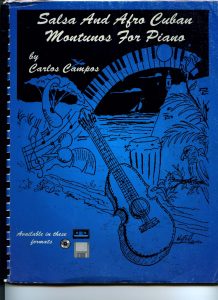
His rediscovery in the 1990s, catalyzed by a reunion with Cuban musician Paquito D’Rivera, sparked one of the most spectacular late-career resurgences in music history. This culminated in his participation in the 2000 Calle 54 documentary, which reintroduced his genius to the world. The final chapter of his life was a golden age, producing Grammy-winning albums and a deeply moving collaboration with his son, Chucho, closing the circle of a life defined by both profound loss and triumphant return.
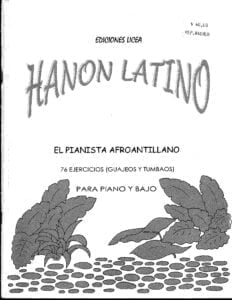
Music Style, Harmony, and Improvisation
Bebo’s style was the bedrock of modern Cuban piano. It was a powerful, elegant synthesis of:
- Afro-Cuban Rhythmic Foundation: His left hand was a master of the tumbao—the repeating rhythmic and harmonic pattern that is the engine of salsa and son. He had an innate, sophisticated understanding of rhythms like the son montuno, guaguancó, and mambo.
- Jazz Harmony: He was deeply influenced by American jazz pianists, particularly the harmonic sophistication of Art Tatum and the bebop language of players like Bud Powell. He seamlessly integrated extended chords (9ths, 11ths, 13ths) and altered dominants into traditional Cuban progressions.
- Romantic and Classical Touch: His classical training was evident in his rich, chordal textures and lyrical, melodic sensibility.
Chord Progressions and Harmony: Bebo often worked within the standard harmonic frameworks of Cuban music, such as the ubiquitous I-IV-V-IV progression in son montuno. However, his genius lay in his reharmonization. He would enrich these progressions with passing chords, tritone substitutions, and chromatic movements. For example, a simple progression from C major to F major might be approached via a Db7 (tritone sub for G7, the dominant of C), creating a moment of sophisticated, unexpected color.
Improvisational Licks: Bebo’s improvisations were less about blistering speed and more about melodic invention and rhythmic authority. His right-hand lines were clean, swinging, and deeply rooted in the blues, often employing bebop phrasing but always landing firmly on the clave. A typical Bebo lick might mix a Tatum-esque arpeggio with a syncopated, montuno-inspired rhythmic pattern, all delivered with a robust, percussive touch.
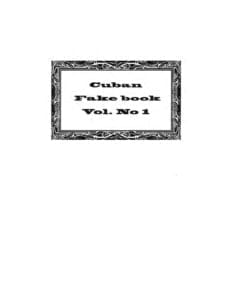
Cooperation and Legacy
Bebo’s collaborations define his legacy. In the 1950s, he recorded with American jazz giant Nat King Cole for his legendary album “Cole Español,” serving as arranger and pianist. In his renaissance, his work with Paquito D’Rivera on “Bebo Rides Again” and the Grammy-winning “Bebo de Cuba” was monumental. However, his most emotionally resonant partnership was with his son Chucho on the album “Juntos para Siempre” (Together Forever), a stunning duo piano recording that is a conversation across time and exile.
His legacy is that of a foundational pillar. He was a direct link from the classic son to the mambo explosion and a key figure in the first great fusion of Cuban music and jazz. He proved that tradition and innovation were not opposites but essential partners.
Part II: The Virtuoso – Chucho Valdés (1945 – )
Biography
Jesus “Chucho” Valdés was born in Quivicán in 1945, into music. He began piano studies with his father at age three and was a child prodigy, forming his first jazz trio as a teenager. While Bebo went into exile, Chucho remained in Cuba, where his star rose meteorically. He absorbed his father’s teachings but was also voraciously listening to Oscar Peterson, Bill Evans, and McCoy Tyner.
In 1967, he won a prize at the prestigious Marianao Jazz Festival, but his world-changing moment came in 1973 with the founding of Irakere. Alongside peers like Paquito D’Rivera and Arturo Sandoval, Irakere was a musical earthquake. The group fused Cuban folkloric rhythms (batá drums, abakuá), funk, rock, and complex, modern jazz harmony in a way that had never been heard before. They won a Grammy in 1979 and became Cuba’s most famous musical export, showcasing Chucho’s visionary leadership and breathtaking technique to the world.
While Irakere remained his primary vehicle for decades, Chucho has also led various small groups, including his Afro-Cuban Messengers, and has pursued a prolific solo career. He has won multiple Grammys and is universally regarded as one of the greatest jazz pianists alive—a titan who commands the keyboard with a unique blend of power, grace, and rhythmic complexity.
Music Style, Harmony, and Improvisation
Chucho took the foundation laid by his father and constructed a skyscraper upon it. His style is characterized by:
- Orchestral Piano Technique: Possessing a thunderous, orchestral power reminiscent of McCoy Tyner, he can generate immense waves of sound. His command of the entire keyboard is absolute, from rumbling, Tyner-esque fourths in the left hand to lightning-fast, Tatum-inspired runs in the right.
- Synthesis of Folkloric and Modern Jazz: Chucho’s great innovation was the deep integration of Santeria rhythms into a jazz context. He doesn’t just play over a clave; he internalizes the polyrhythmic language of the batá drums (the sacred drums of Santeria), creating layered, interlocking rhythmic patterns between his two hands.
- Harmonic Sophistication: He operates at the highest level of jazz harmony, utilizing modal interchange, polytonality, and dense chord clusters, all while maintaining a clear, compelling melodic through-line.
Chord Progressions and Harmony: Chucho’s compositions often feature complex, through-composed sections that give way to fiery improvisation over vamps or standard jazz changes. A piece like “Mambo Influenciado” is a perfect example: it begins with a classical-inspired introduction (a nod to Chucho’s own classical training) before diving into a dizzying array of modulations and rhythmic shifts. He is a master of modal vamps, creating hypnotic, rhythmic grooves over a static harmonic center, allowing for intense rhythmic exploration.
Improvisational Licks: Chucho’s improvisations are monumental. He seamlessly blends:
- Bebop Lines: Flawlessly executed, chromatically enriched bebop phrases.
- Pentatonic and Modal Vocabulary: Drawing from McCoy Tyner, he uses pentatonic scales and “power chords” (stacked fourths and fifths) to build soaring, modal solos.
- Montuno Passages: He will frequently break into a virtuosic, harmonically rich montuno, often with both hands playing interlocking, syncopated patterns, creating the effect of an entire rhythm section from the piano.
A typical Chucho solo is a journey through dynamics and texture, moving from a whisper to a thunderous climax, incorporating classical arpeggios, thunderous left-hand guajeos, and right-hand lines that dance with impossible agility.
Cooperation and Legacy
Chucho’s collaborations are a who’s who of jazz and Latin music. Beyond Irakere, he has worked with Dizzy Gillespie, Roy Hargrove (in the Grammy-winning Crisol project), Wynton Marsalis, and countless others. His album “Jazz Batá” was a landmark solo project featuring piano and batá drums.
His legacy is immense. He is the undisputed master of Afro-Cuban jazz, a pianist whose technique and artistic vision have inspired generations. He successfully bridged the worlds of Cuban folkloric music and modern jazz, proving their profound compatibility. Furthermore, he became a global ambassador for Cuban culture, all while maintaining a complex relationship with the Cuban government, navigating a path that his father could not.
The Convergence: Father and Son
The story of Bebo and Chucho is not just two parallel lines; it is a narrative of separation and reunion. For over twenty years, they were apart, connected only by music and blood. Their reunion in the 1990s was emotional, but their musical reunion on the 2000 album “El Arte del Sabor” and, most powerfully, on the 2008 live album “Juntos para Siempre,” was historic.
“Juntos para Siempre” is a document of pure musical empathy. The telepathy between them is audible; they finish each other’s phrases, comp with intuitive grace, and swing with a shared, profound depth. It is not a competition but a conversation—a culmination of a lifetime of individual journeys that were, in fact, always intertwined.
Filmography
Both Valdés musicians feature prominently in film, most notably in Fernando Trueba’s “Latin Jazz” series:
- Calle 54 (2000): This documentary is essential viewing. It features stunning performances by both Bebo (including a heartbreakingly beautiful solo performance of “Lágrimas Negras”) and Chucho with Irakere. It was the film that spectacularly reintroduced Bebo to the world.
- El Milagro de Candeal (2004): Features Bebo Valdés and his collaboration in Brazil.
- Chico and Rita (2010): This animated film, co-written by Trueba, features a soundtrack and musical direction by Bebo Valdés. It is a loving tribute to the pre-revolutionary Cuban jazz scene that Bebo helped define, and his music provides its soul.
Discography (A Selection)
Bebo Valdés
- Bebo Valdés y su Orquesta (1950s)
- El Arte del Sabor (2001) with Cachao and Patato Valdés – Grammy Winner
- Lágrimas Negras (2003) with Diego El Cigala – A massive crossover success.
- Bebo de Cuba (2005) – Grammy Winner
- Juntos para Siempre (2008) with Chucho Valdés
Chucho Valdés
- With Irakere: Irakere (1979), Misa Negra (1988)
- Solo/Small Group: Jazz Batá (1972), Lucumí (1986), Solo Piano (1991), Briyumba Palo Congo (1999)
- Collaborations: Habana (1997) with Roy Hargrove and Crisol, Fantasia Cubana: Variations on Classical Themes (2000)
- Later Work: Chucho’s Steps (2010), Border-Free (2013), Jazz Batá 2 (2018)
Most Known Compositions and Performances
Bebo Valdés:
- “La Música Cubana es lo Máximo que Hay”
- “Con Poco Coco”
- His piano parts on Nat King Cole’s “Cole Español”
- His performance of “Lágrimas Negras” in Calle 54 and with Diego El Cigala.
Chucho Valdés:
- “Mambo Influenciado” – His tour de force, a summary of his entire musical philosophy.
- “Juana 1600” – A classic Irakere track.
- “Obatalá” – From “Lucumí,” a deep exploration of Santeria themes.
- “The Clown” – A showcase for his trio’s virtuosity and dynamic range.
The story of Bebo and Chucho Valdés is more than a musical dynasty; it is an epic narrative of the 20th century, told through rhythm and harmony. It encompasses the golden age of Havana, the pain of exile, the resilience of art, and the redemptive power of family. Bebo, the architect in exile, preserved and refined the tradition. Chucho, the virtuoso who stayed, exploded that tradition into a new, globalized universe of sound.
Born on the same day, they were destined to share a musical soul. Through their individual genius and their eventual reunion, they created a body of work that is not only technically staggering and artistically profound but also deeply human. They ensured that the heart of Cuban music, with all its complexity, joy, and sorrow, would beat powerfully on the world stage, forever.
